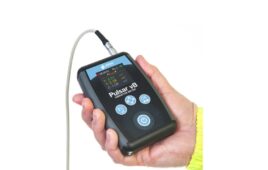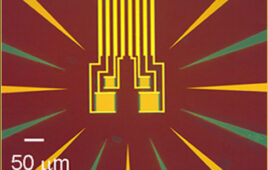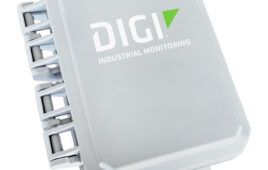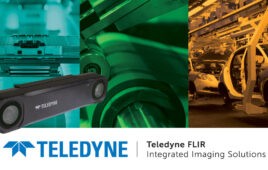Unlike robots whose roots trace back to 1962 or even sooner, collaborative robots or cobots trace their roots to 1996 – over 34 years later. While the robot is an autonomous machine that functions without human control, a cobot employs artificial intelligent (AI) to perform tasks in collaboration with human workers. Major sensor technologies used in robots include torque, force, optical, position, and temperature. Since the cobot must work safely with humans, sensors for safe operation are a critical factor. For example, to comply with functional safety requirements up to ISO13849 Category 3 PL d, TE Connectivity’s (TE) safety torque sensor’s design is based on a dual-channel system and includes other features to detect any safety related failures.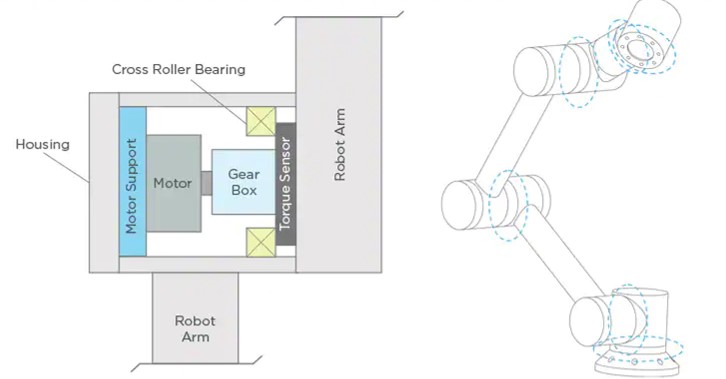
Designed to monitor the mechanical torque in a variety of the rotational pivot points on a cobot, the torque sensor is based on an integrated MEMs load cell that can translate mechanical torque to a digital output signal proportional to the torque applied. In the cobot, the sensor detects conditions where the torque level is high enough to potentially harm a human in a collaborative application or where the torque level could damage the cobot itself.
The torque sensor starts with a one-piece flexure designed to translate rotational torque into mechanical strain. Piezoresistive strain gauges attached to the flexure areas and assembled in a Wheatstone bridge configuration translate the mechanical strain to a mV/V output. Two small printed circuit boards (PCBs) on the sensor house an ASIC and other electrical components. The circuitry compensates, amplifies, digitizes and communicates the raw mV/V signal in an I2C format. Also, a torque threshold can be established to shut down the cobot before any humans are injured or before any damage occurs to the cobot itself.
Proving safety critical collision sensing in collaborative robots, the overall height of TE’s low profile safety torque sensor is less than 20 mm. The cobot torque sensor operates in both the clockwise, counterclockwise directions and has a full-scale range of 20 – 500 Nm (15 – 400 lbf) with a static rotation speed.
Filed Under: Sensor Tips

